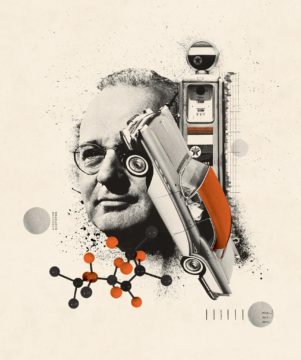Steven Johnson in The New York Times:
 It was said that Thomas Midgley Jr. had the finest lawn in America. Golf-club chairmen from across the Midwest would visit his estate on the outskirts of Columbus, Ohio, purely to admire the grounds; the Scott Seed Company eventually put an image of Midgley’s lawn on its letterhead. Midgley cultivated his acres of grass with the same compulsive innovation that characterized his entire career. He installed a wind gauge on the roof that would sound an alarm in his bedroom, alerting him whenever the lawn risked being desiccated by a breeze. Fifty years before the arrival of smart-home devices, Midgley wired up the rotary telephone in his bedroom so that a few spins of the dial would operate the sprinklers.
It was said that Thomas Midgley Jr. had the finest lawn in America. Golf-club chairmen from across the Midwest would visit his estate on the outskirts of Columbus, Ohio, purely to admire the grounds; the Scott Seed Company eventually put an image of Midgley’s lawn on its letterhead. Midgley cultivated his acres of grass with the same compulsive innovation that characterized his entire career. He installed a wind gauge on the roof that would sound an alarm in his bedroom, alerting him whenever the lawn risked being desiccated by a breeze. Fifty years before the arrival of smart-home devices, Midgley wired up the rotary telephone in his bedroom so that a few spins of the dial would operate the sprinklers.
In the fall of 1940, at age 51, Midgley contracted polio, and the dashing, charismatic inventor soon found himself in a wheelchair, paralyzed from the waist down. At first he took on his disability with the same ingenuity that he applied to maintaining his legendary lawn, analyzing the problem and devising a novel solution to it — in this case, a mechanized harness with pulleys attached to his bed, allowing him to clamber into his wheelchair each morning without assistance. At the time, the contraption seemed emblematic of everything Midgley had stood for in his career as an inventor: determined, innovative thinking that took on a seemingly intractable challenge and somehow found a way around it.
Or at least it seemed like that until the morning of Nov. 2, 1944, when Midgley was found dead in his bedroom. The public was told he had been accidentally strangled to death by his own invention. Privately, his death was ruled a suicide. Either way, the machine he designed had become the instrument of his death.
More here.
